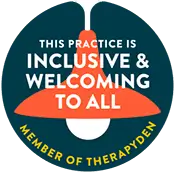Major styles of communication
One significant cause of anxiety and relationship difficulties can be not understanding how to or being comfortable communicating assertively. There are four main types of communication, all of which have their strengths and drawbacks.
Passive communication
When a person is passive, they ignore their own needs at the expense of others. While this can seem friendly and kind, but it often leads to feelings of resentment and burnout. People who are passive in their communication and actions often have difficulty saying “no” and can overextend themselves.
Passive-aggressive communication
Passive-aggressive communication can be one of the most frustrating types for others. People often act passive-aggressively because they do not like conflict but want to get the point across. Examples can include ignoring others for whom there could be conflict, communicating sensitive topics via writing or social media instead of face-to-face or a phone call, and being ambiguous in stating what one wants.
Assertive Communication
Assertive communication is generally the best way to ensure that your and your friends’ needs are both being met. It involves looking out for the needs of self and others at the same time. It involves saying “no” when saying yes would be overly burdensome or cause resentment. It involves speaking up about one’s own needs without ignoring the needs of others. It is important to note that there may be times where assertive communication is not the best (e.g., your boss asks you to do something critical, and it really needs to be done by a specific date), but these situations are generally rare.
Aggressive Communication
Aggressive – Aggressive communication involves looking out for owns own needs at the expense of others. This type of communication can work in the short term but often causes people to resent the aggressor. There are a few occasions where when assertive communication has failed, being more aggressive can allow the squeaky wheel to get the grease. These situations should be reserved for situations like working with challenging customer service or advocating for marginalized individuals who aren’t being heard.







